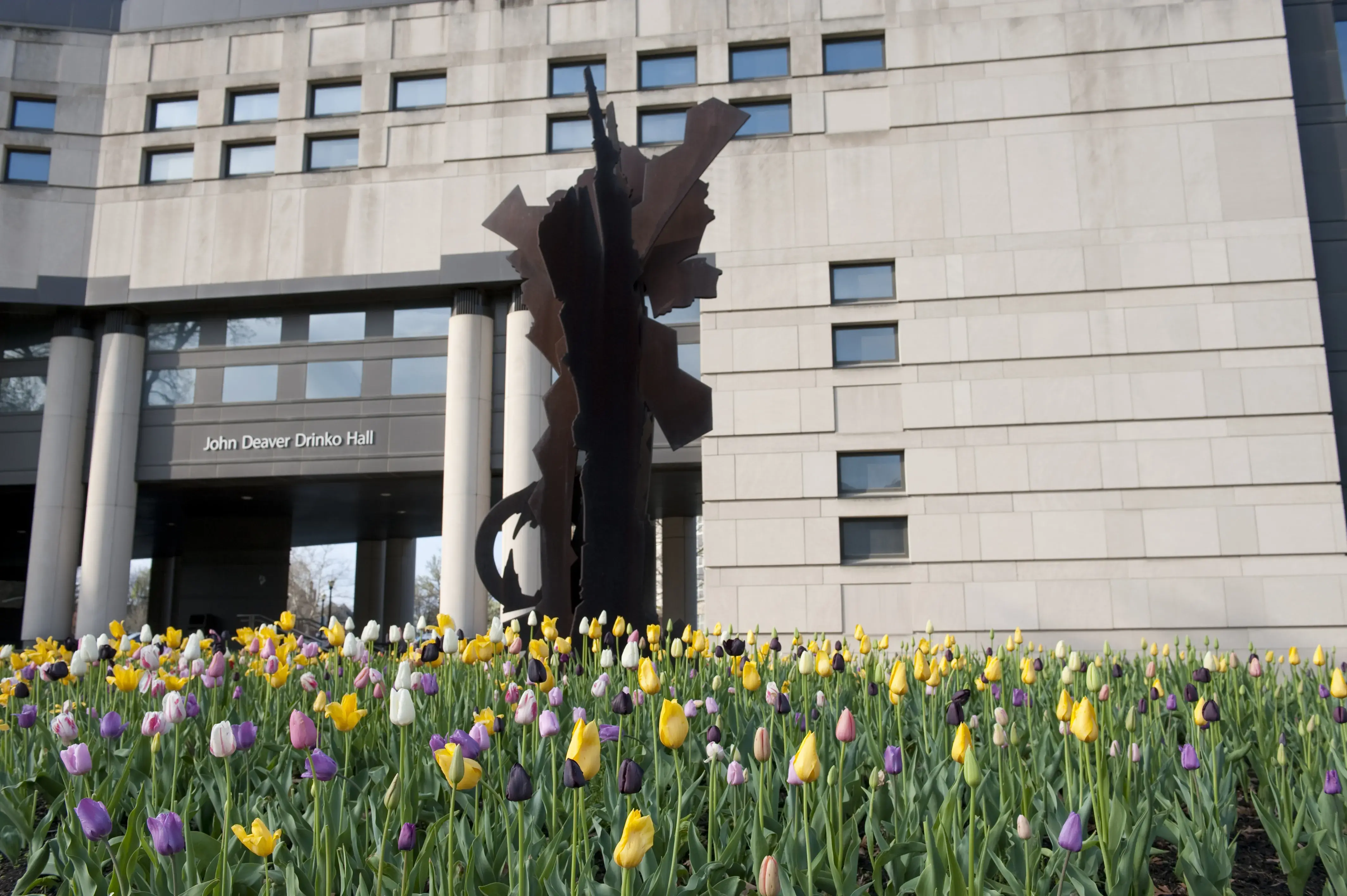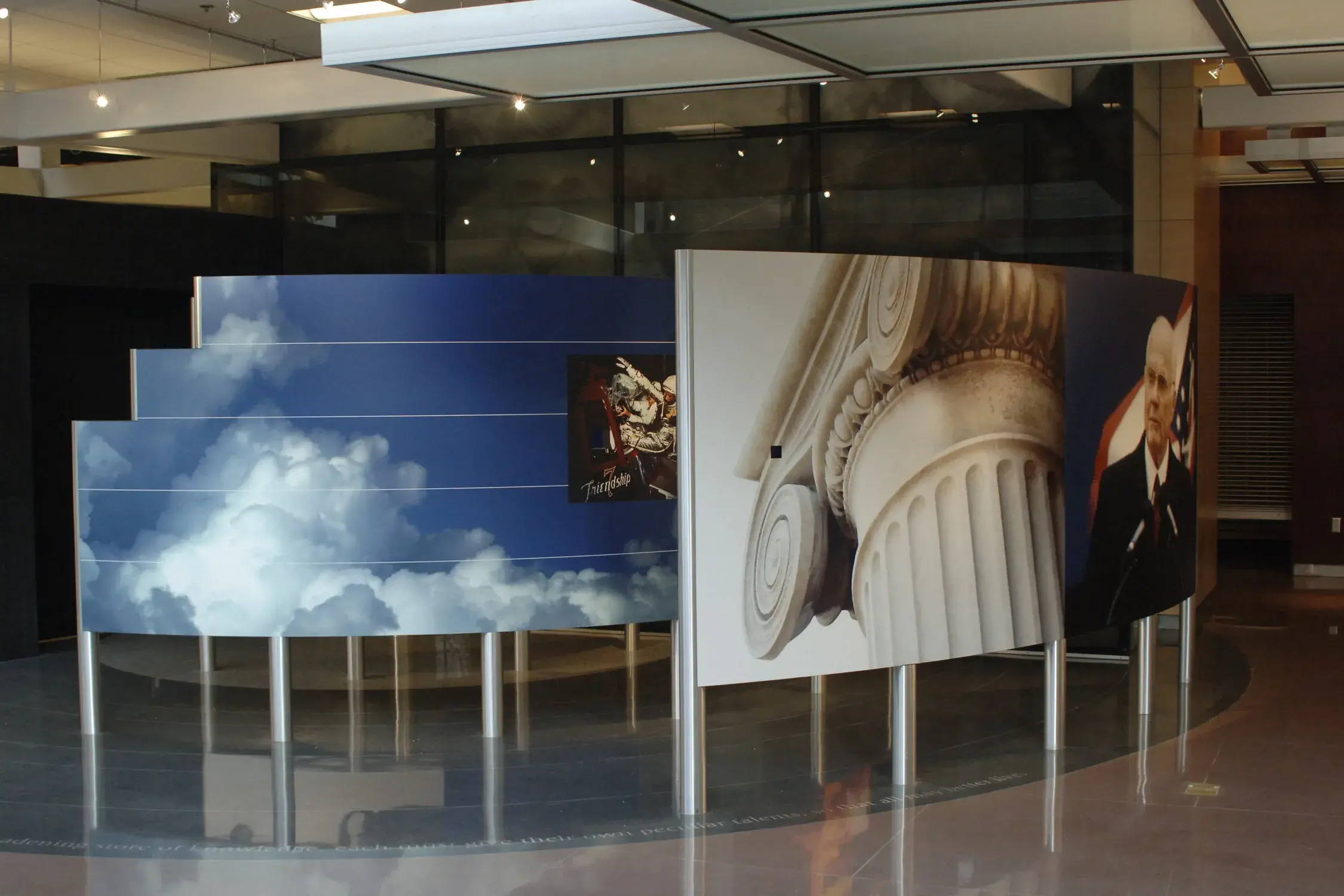
About the art
Roy Lichtenstein is best known for his Pop Art paintings imitating panels from American comic strips, but he also created sculpture such as the 31-foot-tall Modern Head, installed on the lawn between Smith and McPherson Laboratories. The brushed stainless steel construction forms the image of an abstract human face in profile, combining hard, blocky lines and smooth semicircles. The style is reminiscent of the Art Deco movement of the 1920s, a mode of fashion, design and architecture that also combined hard edges with round forms and was contemporaneous with the construction of the Laboratories. The playful Modern Head gives the impression of a neck stretching toward the sky and a mind busy with thoughts.
Modern Head is an interesting example of how an artist’s work can continue to grow and change over their career and even after their death. Lichtenstein created the design for Modern Head in 1974, first as a bright blue painted wooden sculpture for a mall in Los Angeles. In 1989, when the mall was demolished, the sculpture was repurposed for the fabrication of four casts: three in stainless steel and another of bright blue polyurethane, all now scattered across the world. In 2018, 21 years after the artist’s death, a fifth sculpture was made with approval of the Lichtenstein Estate. The work was specially chosen as a gift for Ohio State by the Roy Lichtenstein Foundation in memory of Lichtenstein.
Collection of The Ohio State University. Gift of the Roy Lichtenstein Foundation. Fabrication funded through the Ohio Percent for Art program.
Material
Brushed stainless steel
Location
Outside in the Courtyard between Smith Lab & McPherson Lab


About the artist
Roy Lichtenstein was a key figure in the Pop Art movement of the 1960s, most known for his labor-intensive paintings intentionally mimicked the half-tone printing of newspapers and comic books. Pop artists used the motifs of modern daily life as the basis for their work, meant to be accessible to everyone and bring attention to the aesthetics of the everyday. The movement began as an act of resistance against the institutions of art, which young artists felt had little connection to their lives. An engagement with “low” subject matter was at first highly controversial in the art world, but Lichtenstein and other Pop Artists eventually used it to reinvigorate the field of painting.
Lichtenstein was a two-time graduate of The Ohio State University (BFA ’46, MFA ’49) and a faculty member in the Department of Art from 1946 to 1951. He was a student of Hoyt L. Sherman, a professor of art at Ohio State who Lichtenstein would work alongside when he later became a professor. Lichtenstein credits Sherman for showing him how to see and for influencing the perception-based art he produced later in life. Following Sherman’s death in 1981, Lichtenstein donated the funding for the Sherman Arts Center, found in West Campus, and dedicated the building to his late mentor. Throughout his prolific career, Lichtenstein produced over 5,000 paintings, prints and sculptural objects.


